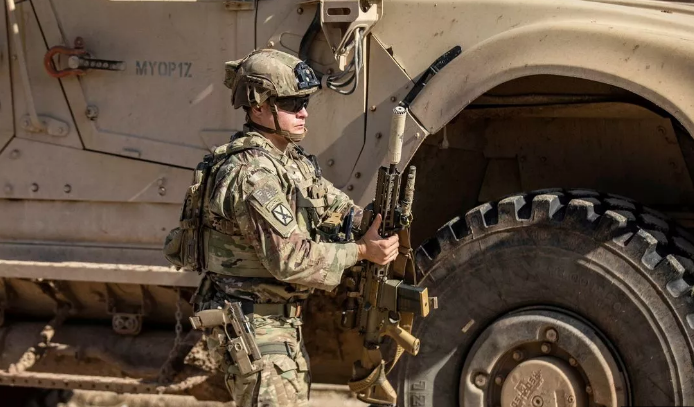In a distressing escalation of hostilities in the Middle East, a drone strike targeted a U.S. military base in Jordan, resulting in the tragic deaths of three American soldiers and injuries to at least 34 others. This incident marks a significant and sorrowful event, being the first to cause American fatalities after a series of attacks on U.S. forces in the region over recent months.
The Context of the Attack
The attack took place at a military installation known as Tower 22, situated in northern Jordan close to the Syrian border. This facility is pivotal for logistical support to U.S. forces, particularly those engaged in operations in Syria. The drone, striking near the sleeping quarters of the troops, caused a high number of casualties, highlighting the vulnerability of military personnel even within the confines of their bases.
Tower 22 serves as a crucial hub for U.S. military operations in the Middle East, offering essential support to troops involved in various missions, including the enduring defeat of ISIS. The base’s strategic location near the Syrian border and its proximity to the U.S. military base at al-Tanf in Syria underline its significance for American military endeavors in the region. However, the Jordanian government does not publicly acknowledge the existence of this installation, reflecting the sensitive nature of military operations and alliances in the Middle East.
The Response from U.S. Leadership
In the wake of the attack, U.S. President Joe Biden vowed to hold those responsible accountable, emphasizing the nation’s commitment to defending its troops and interests. Defense Secretary Lloyd Austin echoed this sentiment, asserting that the U.S. would take all necessary actions to protect its forces. This firm stance underscores the gravity of the situation and the potential for further escalation in a region already fraught with tension.
The attack on Tower 22 comes against the backdrop of increasing hostilities in the Middle East, particularly involving Iranian-backed militias. These groups have launched numerous strikes against American military installations in Iraq and Syria, largely in retaliation for U.S. support for Israel and efforts to push U.S. forces out of the region. The incident in Jordan, therefore, is not an isolated event but part of a larger pattern of aggression that poses significant challenges to regional stability and U.S. strategic interests.
The Way Forward
The drone strike in Jordan is a stark reminder of the persistent threats facing U.S. forces in the Middle East and the complex geopolitical dynamics at play. As the U.S. contemplates its response, the international community watches closely, aware that the actions taken could have far-reaching implications for peace and security in the region. The path forward requires a delicate balance between military readiness, diplomatic engagement, and strategic foresight to navigate the intricate web of alliances and enmities in the Middle East.
Read More:
- Man Taken to Hospital After Deputy-Involved Shooting in Norwalk
- WATCH: Hulk Hogan shows up at son’s DUI arrest in Clearwater
- Political Headwinds in Florida Governor DeSantis Faces Challenges Ahead of Legislative Session
In conclusion, the tragic loss of American lives in Jordan is a sobering development that highlights the ongoing risks and challenges in the region. The response from the U.S. and its allies will be critical in determining the course of future engagements in the Middle East, with the aim of safeguarding the lives of military personnel while striving for a stable and peaceful regional order.

